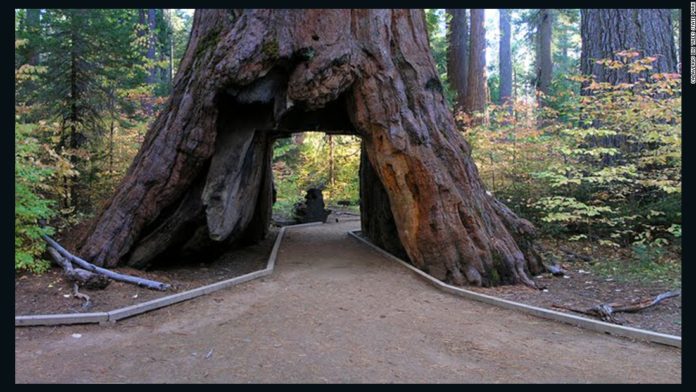Visiting the park by car is easy to do. The two main roads visitors will travel are Crater Rim Drive and Chain of Craters Road. All roads in the park are two-wheel drive roadways and do not require four-wheel drive vehicles.
Additionally, How much does it cost to go to Volcano National Park?
| Per Vehicle | Per Person (pedestrians & bicycles) | |
|---|---|---|
| Current | $25 | $12 |
| June 1, 2018 | $25 | $12 |
| Jan. 1, 2020 | $30 | $15 |
12 avr. 2018
Can you walk on a volcano in Hawaii? Volcano, Hawaii
You are able to actually walk on the Kilauea Crater floor. You will even feel the heat under your shoes. Wear good hiking shoes, and carry your own water, and be reasonably fit.
Subsequently, How long does it take to drive the Big Island of Hawaii? How long does it take to drive around the Big Island of Hawaii? To drive around Hawaii based on my itinerary, it’ll take about eight hours. However, that’s without making many stops, and you’ll want to spend time at these places.
FAQ
Can you drive to the Big Island Volcano?
Depending on where along the Kona coast you’re driving from, you can expect the drive to Hawaii Volcanoes National Park to take around 2-2.5 hours. From the Waikoloa area, going the southern route may take around 2.5-3 hours. But that’s without any stops!
How many volcanoes does Hawaii have? Each island is made of one or more volcanoes, which first erupted on the floor of the Pacific Ocean and emerged above sea level only after countless eruptions. Presently, there are six active volcanoes in Hawaii.
Can you go see the volcano in Hawaii? Over time, volcanoes have formed some of our most iconic landscapes. Today, Hawaii Volcanoes National Park on the island of Hawaii is one of the few places in the world where visitors can come face to face with an active volcano—a truly unforgettable experience.
Can you visit a live volcano in Hawaii? Volcano tours in Hawaii are the perfect way to experience a deep insight into Hawaiian volcanic history. Tours depart from Oahu, Maui and the Big Island. Kilauea on the Big Island is the world’s most active volcano, and Haleakala has one of the world’s largest dormant volcanic craters on Maui.
How close can you get to lava?
How close can you get to flowing lava? You can get around 700 meters close to flowing lava and it will still be quite hot.
How hot is lava? When lava first breaks through Earth’s surface, it is an extremely hot liquid. On average, fresh lava can be between 1,300° F and 2,200° F (700° and 1,200° C)! Depending on its exact temperature, fresh lava usually glows either orange/red (cooler) or white (hotter).
How long is Crater Rim Drive?
Crater Rim Drive is an 11-mile road that skirts the edge of the Kilauea Caldera in Hawaii Volcanoes National Park and contains several scenic views and hiking opportunities.
What island has black sand beaches? Have you ever seen a beach with black sand? Because of constant volcanic activity, you’ll find white sands and black sands on the island of Hawaii. Located on the southeastern Kau coast, Punaluu Black Sand Beach is one of the most famous black sand beaches in Hawaii.
Can you drive around Hawaii in a day?
But for those short on time for whatever reason, it is possible to get a comprehensive view of the island with a car, early wake-up call and endurance for more than 200 miles of driving in one day.
How long does it take to get from one side of the Big Island to the other?
Driving to and from the island’s two largest towns—Kailua-Kona and Hilo—will take well over an hour, and that’s the short way. Driving along Hawaii Belt Road and Mamalahoa Highway would be considered the scenic route—the 125-mile trip takes about three hours.
How far is Kona to Volcano? The distance between Kailua-Kona and Volcano is 52 miles. The road distance is 102.8 miles.
When did Crater Rim Drive close? This section of Crater Rim Drive has been closed since 2008, when the still-erupting vent within Halema’uma’u Crater (middle, far right) first opened. USGS photo.
How long is Crater Rim Drive?
This 38-mile (61 km) round-trip drive descends 3,700 feet (1,128 m) to the coast and ends where lava has covered 10 miles of road since 1986. Allow 90 minutes to two hours round-trip, depending on how often you stop and how far you hike. Note: There are no services (water, gasoline, or food) on Chain of Craters road.
Why is Hawaii sinking? As the Pacific plate moves Hawaii’s volcanoes farther from the hotspot, they erupt less frequently, then no longer tap into the upwelling of molten rock and die. The island erodes and the crust beneath it cools, shrinks and sinks, and the island is again submerged.
What is Hawaii’s youngest island?
Hawaiʻi island (the Big Island) is the biggest and youngest island in the chain, built from five volcanoes.
What is the largest volcano in the world? Rising gradually to more than 4 km (2.5 mi) above sea level, Hawaii’s Mauna Loa is the largest active volcano on our planet.
Is La Palma volcano still erupting?
The Cumbre Vieja volcano had been erupting since September but authorities say that after 10 days of no significant activity, it has finally finished.
Is the volcano in Hawaii still erupting 2021? Kīlauea volcano began erupting on September 29, 2021, at approximately 3:21 p.m. HST in Halema’uma’u crater. Lava continues to erupt from a single vent in the western wall of Halemaʻumaʻu crater. All lava activity is confined within Halemaʻumaʻu crater in Hawai’i Volcanoes National Park.
Don’t forget to share this post !























